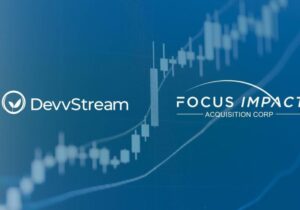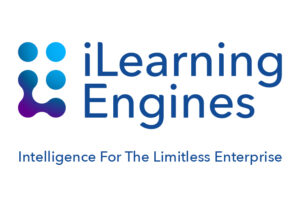
- Stem, Inc. to go public via merger with Star Peak Energy Transition Corp.
- Delivers AI-driven batteries by adapting hardware from manufacturers including Tesla, Samsung, LG
- Stem’s Athena is leading Software-as-a-Service (SaaS) to optimize energy use between sources
- Stem expects 51{efe5d79870c08482e17ab0c97855f89429dac5f22c46026d3ca83573faec2208} annualized revenue growth from 2021-2026, far above peers
- Current clients are major utilities, commercial and industrial users; potentially individual households
- All Stem investors including General Electric Company, Temasek Holdings to roll 100{efe5d79870c08482e17ab0c97855f89429dac5f22c46026d3ca83573faec2208} equity
- Star Peak Chairman Mike Morgan was President at Kinder Morgan, to join Stem board
- Stem CEO is industry veteran John Carrington who has led company since 2013
- Shares are attractive at an enterprise value of 3.6 times 2023 sales, well beneath peers
ESG investors should take their eyes off the road and look a little closer at the power grid.
The transformation of vehicles from carbon fuel to electric power is visible all around us. But hidden behind the grid that powers cities from Los Angeles to Tokyo a parallel revolution is underway: an adoption of AI-driven batteries that store large amounts of energy and use it in a smarter way.
While there are many electric vehicle stocks to choose from, there is only one pure play smart energy storage company. Meet Stem, Inc., which is going public through a merger with Star Peak Energy Transition Corp. (ticker: STPK), a special purpose acquisition company or SPAC that raised money to find a target. Investors who purchase shares of STPK now will see them automatically convert to Stem shares after the deal’s expected close in the first quarter.
To understand the opportunity, investors first need to appreciate the problem Stem helps solve. As regulators, corporations, and utilities drive a shift away from carbon, clean power sources are bound to proliferate. But while wind and solar power can eventually potentially replace fossil fuels in total capacity, they only crank out electricity if the sun is shining or the wind is blowing, making battery storage essential.
Indeed, demand to modernize power grids with green energy and smart storage is surging. Star Peak and Stem pointed out that since 2019, 90{efe5d79870c08482e17ab0c97855f89429dac5f22c46026d3ca83573faec2208} of grid interconnection requests have been for renewables and storage. Just a few years ago, that demand was focused squarely on natural gas, an unfortunate source of climate change.
And just as legislation to eliminate carbon vehicle emissions has driven the electric vehicle market, similar laws are likely to increase demand for smart batteries and related software. California has mandated that all new vehicles be carbon free by 2035 and its entire power grid be carbon free by 2045.
As ESG goals become more important to behemoth investors like BlackRock and Vanguard, companies are making renewable energy a priority. Corporate transcripts that mentioned renewable energy, electric vehicle, battery, or electrification have nearly quadrupled since 2014, according to Sentieo, an AI-enabled research platform. Many big companies have also committed to carbon neutrality, adding pressure to find energy solutions.

Monthly transcripts including “renewable energy” or similar terms, 12-month rolling average – Sentieo
Stem generates revenue in three key ways. First, it offers battery hardware produced by top-tier manufacturers such as Telsa, Inc., Samsung, and LG. Similar to LCD screens, those batteries get significantly cheaper by the year, allowing Stem to buy them, layer on its smart technology, and offer them at a price that’s appealing to customers.
The more exciting opportunity, however, is likely Stem’s powerful software platform, called Athena. The platform serves as an operating system for energy distribution and storage systems which collects big data and helps customers alternate between grid power, onsite generation, and battery power.
As Athena is installed in more places, it collects data to make the entire network smarter. It already has more than 10 years of such data, but its value will only increase over time.
Athena should stand out to investors for its financial characteristics. With a capital-light SaaS profile, it generates 80{efe5d79870c08482e17ab0c97855f89429dac5f22c46026d3ca83573faec2208} gross margins and can be deployed quickly. Stem books 10-to-20-year contracts with Athena, making its value easier to estimate.
Finally, Stem will engage in market participation where it sells power under similarly long-term contracts where sometimes it acts as a “virtual power plant.” For instance, Southern California Edison was in desperate need of power and chose Stem’s storage capability over placing new gas production in place. That business, while smaller than Athena, also boasts an 80{efe5d79870c08482e17ab0c97855f89429dac5f22c46026d3ca83573faec2208} margin and deserves a premium multiple.
All this adds up to a forecast for 51{efe5d79870c08482e17ab0c97855f89429dac5f22c46026d3ca83573faec2208} annualized sales between 2021 and 2026. And Stem already has great visibility, with 88{efe5d79870c08482e17ab0c97855f89429dac5f22c46026d3ca83573faec2208} of 2021 revenue secured by executed contracts. Over time, software will account for a larger percentage of total revenue, making forecasts more accurate and overall margins higher.
Giving investors further confidence, Stem is already a proven market leader. It has been commissioned for more lithium ion storage capacity than major competitors in recent years, including power heavyweights Hyundai Electric and Mitsubishi Electric. Those deployments span over 900 locations in more than 200 cities worldwide. Stem’s software and storage capabilities are also backed by 24 granted patents, protecting it from copycats.
Beyond the core business, even further opportunities exist at the consumer level – literally in households themselves. Families, with say, solar panels and an electric vehicle, could use smart battery technology in the near future. As Mr. Morgan pointed out at a recent investor event, a single commercial or industrial customer looks much like 200 to 2,000 households. Given Stem’s success at the commercial and industrial level, there’s good reason to anticipate more with retail customers.

Importantly, Stem will continue to be led by CEO John Carrington, who has been at the helm since 2013 and brings an impressive industry pedigree. Mr. Carrington has extensive experience including First Solar where he led an 8x increase in revenue as head of marketing as well as 16 years at General Electric where he also held a senior marketing role.
Star Peak itself brings a great deal to the table. It is comprised of members of Magnetar and Triangle Peak Partners with a 12-year relationship. Since 2015, Magnetar’s Energy & Infrastructure group has deployed more than $6 billion in private investments, and together, Magnetar and Triangle Peak Partners have made 110 investments in clean energy and related industries. Star Peak Chairman Mike Morgan, who was President at Kinder Morgan and remains Lead Director there, will join the Stem board. Mr. Morgan also has significant green energy experience from Sunnova Energy International, Inc., a publicly-traded residential solar business, where he is currently a director.
The merger with Star Peak will also load up the company’s debt-free balance sheet with $525 million of cash. That’s plenty to cover expenses for the next several years, underpinning Stem’s revenue growth without a need to borrow or issue more shares.
Turning to valuation, Star Peak shares have pulled back from their recent high around $26 in December and now trade at $18, an implied enterprise valuation of 3.6 times 2023 sales. By comparison, Sunnova trades at 17.8 times 2023 sales, according to Sentieo. Enphase Energy, Inc. trades at 10.7 times and Tesla commands a multiple of 10.4 times.
Tellingly, Stem will carry along a roster of blue-chip investors, all of whom have elected to keep 100{efe5d79870c08482e17ab0c97855f89429dac5f22c46026d3ca83573faec2208} of their equity in the newly-formed company. They include a world tour of companies and institutions from General Electric to Singapore government investment arm Temasek Holdings to Canada’s the Ontario Teachers pension to Japan’s Mitsui & Co.
These days, there are plenty of ESG stocks in consumer-facing industries on every investor’s radar. But for those who do their homework, Stem is the kind of opportunity that may truly light up a portfolio.
IPO Edge Contact:
John Jannarone, Editor-in-Chief
Twitter: @ipoedge







